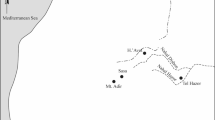Abstract
The Peruvian Middle Horizon (ca. AD 540–900) is characterized by the first appearance of imperialism in the Andes. During this period, the Huari of the central highlands Ayacucho region expanded their territory into many parts of the sierra and adjacent coast. In the southern highlands, in the Cuzco Valley, they built the monumental complex of Pikillacta. Extensive excavations at Pikillacta by Gordon McEwan (1984, 1991a), and analysis of the site’s pottery by the author (1996), have pointed to Pikillacta as the principal Huari administrative center of the region. Because of its size and the concentration of research at Pikillacta, other smaller Cuzco Huari sites were believed to have supported Pikillacta’s maintenance and operation.
Access this chapter
Tax calculation will be finalised at checkout
Purchases are for personal use only
Preview
Unable to display preview. Download preview PDF.
Similar content being viewed by others
References
Allen, Catherine J., 1988, The Hold life Has: Coca and Cultural Identity in an Andean Community. Smithsonian Institution Press. Washington, D.C.
Anders, Martha B., 1986, Dual Organization and Calendrics Inferred from the Planned Site of Azangaro: Wari Administration Strategies. Ph.D. dissertation. Department of Anthropology, Cornell University, Ithaca. University Microfilms, Ann Arbor.
Barreda, M. Luis, 1964, Primera Excavación en Piquillacta. Tésis doctoral. Departamento de Historia, Universidad Nacional San Antonio Abad del Cuzco, Cuzco.
Brewster-Wray, Christine C, 1990, Moraduchayuq: An Administrative Compound at the Site of Huari, Peru. Ph.D. dissertation. Department of Anthropology, State University of New York, Binghamton.
Garcilaso de la Vega, El Inca, 1987, Royal Commentaries of the Incas and General History of Peru, Part I. University of Texas Press, Austin, [originally 1609]
Glowacki, Mary, 1996, The Wari Occupation of the Southern Highlands of Peru: A Ceramic perspective from the Site of Pikillacta. Ph.D. dissertation. Department of Anthropology, Brandeis University, Waltham.
Glowacki, Mary and Julinho Zapata R., 1998, The Wari Occupation of Cuzco: Recent Discoveries from the Huaro Valley. Paper presented at the 38th Annual Meeting of the Institute of Andean Studies, Berkeley.
Glowacki, Mary and Nancy Roman, 2001, Valle de Huaro: Primera Etapa: Reconocimiento Sistematico de la Superficie. Informe presentado al Instituto Nacional de Cultura, Cuzco, Peru.
Isbell, Billie Jean, 1978, To Defend Ourselves: Ecology and Ritual in an Andean Village. Institute of Latin American Studies. University of Texas Press, Austin.
Isbell, William H., 1977, Rural Foundations for Urbanism: A Study of Economic and Stylistic Interaction Between a Rural and Urban Community in VII-Century Peru. Illinois Studies in Anthropology, Number 10. University of Illinois Press, Urbana.
Isbell, William H., 1988, City and state in the Middle Horizon Wari. In Peruvian Prehistory, edited by Richard W. Keatinge, pp. 164–189. Cambridge University Press, Cambridge.
Isbell, William H., Christine B. Brewster-Wray and Lynda E. Spickard, 1991, Architectural and spatial organization at Huari. In Huari Administrative Structure: Prehistoric Monumental Architecture and State Government, edited by William H. Isbell and Gordon F. McEwan, pp. 19–53. Dumbarton Oaks Research Library and Collection, Washington, D.C.
Kolata, Alan L., 1993, The The Tiwanaku: Portrait of an Andean Civilization. Blackwell, Cambridge and Oxford.
Lavender, Michael, 1997, Preliminary analysis of the Huaro lithics. Unpublished manuscript in possession of the author.
Lavender, Michael, 1999, Wari stone tool assemblages: a comparative analysis of lithic material from two sites in the Huaro Valley, Cuzco. Paper presented at the 64th Annual Meeting of the Society for American Archaeology, Chicago, Illinois.
Lumbreras, Luis G., 1974, The Peoples and Cultures of Ancient Peru. Smithsonian Institution Press, Washington, D.C.
McEwan, Gordon F., 1984, The Middle Horizon in the Valley of Cuzco, Peru: The Impact of Pikillacta in the Lucre Basin. Ph.D. dissertation. Department of Anthropology, University of Texas, Austin.
McEwan, Gordon F., 1991a, Investigations at the Pikillacta site: a provincial Huari center in the Valley of Cuzco. In Huari Administrative Structure: Prehistoric Monumental Architectural and State Government, edited by William H. Isbell and Gordon F. McEwan, pp. 93–119. Dumbarton Oaks Research Library and Collection, Washington, D.C.
McEwan, Gordon F., 1991b, Pikillacta research update. Unpublished manuscript in possession of author.
McEwan, Gordon F. and Nicole Couture. 1994, The function of Type II Structures in Wari architecture. Unpublished manuscript in possession of the authors.
Menzel, Dorothy, 1964, Style and time in the Middle Horizon. Ñawpa Pacha 2: 1–105.
Molina, Cristóbal de, 1943, Fábulas y ritos de los Incas. In Las crónicas de los Molinas, pp. 1–84. Los Pequeños Grandes Libros de Historia Americana, Serie I, Tomo IV, Lima, [originally 1573]
Morris, Craig and Donald E. Thompson. 1985, Húanuco Pampa: An Inca City and its Hinterland. Thames and Hudson, London.
Murra, John V, 1975, El tráfico de mullu de la costa del Pacífico. In Formaciones Económicas y Políticas del Mundo Andino by John V. Murra, pp. 255–267. Instituto de Estudios Peruanos, Lima.
Patterson, Thomas C, 1967, Current research, highland South America. American Antiquity 32 (1): 143–144.
Rostworowski de Canseco, María, 1976, Etnía y Sociedad. Instituto de Estudios Peruanos, Lima.
Rowe, John H., 1946, Inca culture at the time of the Spanish conquest. In Handbook of South American Indians, vol. 2, edited by Julian H. Steward, pp. 183–330. Bulletin 143. Bureau of American Ethnology, Smithsonian Institution, Washington, D.C.
Rowe, John H., 1956, Archaeological explorations in southern Peru, 1954-1955. American Antiquity 22(2): 135–151.
Zapata R., Julinho, 1993, Proyecto arqueológico Huaro. Construcciones y sepulturas en el cementerio Wari de Batan Urqu. Report on file with the Nacional Institute of Culture, Cuzco.
Editor information
Editors and Affiliations
Rights and permissions
Copyright information
© 2002 Springer Science+Business Media New York
About this chapter
Cite this chapter
Glowacki, M. (2002). The Huaro Archaeological Site Complex. In: Isbell, W.H., Silverman, H. (eds) Andean Archaeology I. Springer, Boston, MA. https://doi.org/10.1007/978-1-4615-0639-3_9
Download citation
DOI: https://doi.org/10.1007/978-1-4615-0639-3_9
Publisher Name: Springer, Boston, MA
Print ISBN: 978-1-4613-5171-9
Online ISBN: 978-1-4615-0639-3
eBook Packages: Springer Book Archive




